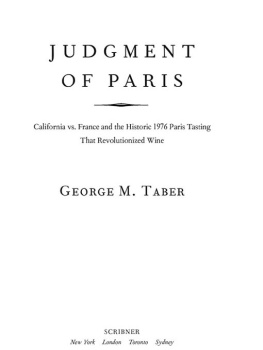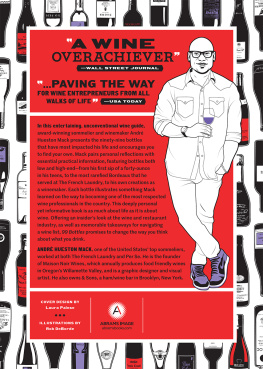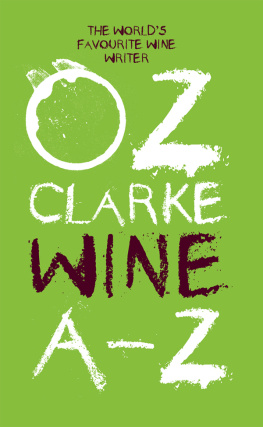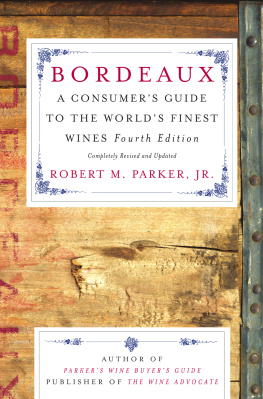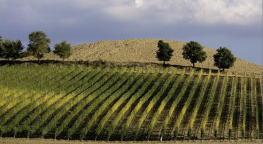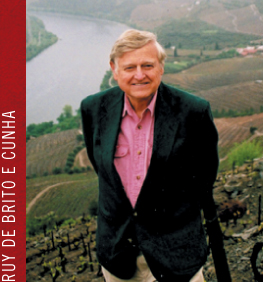
GEORGE M. TABER s Judgment of Paris was the 2006 wine book of the year for Britains Decanter magazine. His second book, To Cork or Not To Cork, won the Jane Grigson Award from the International Association of Culinary Professionals and was a finalist for the James Beard Foundation Award for best book on wine and spirits and the Andr Simon Award for best wine book.
MEET THE AUTHORS, WATCH VIDEOS AND MORE AT
SimonandSchuster.com
THE SOURCE FOR READING GROUPS
COVER DESIGN BY KRISTINA DIMATTEO
Thank you for purchasing this Scribner eBook.
Sign up for our newsletter and receive special offers, access to bonus content, and info on the latest new releases and other great eBooks from from Scribner and Simon & Schuster.

or visit us online to sign up at
eBookNews.SimonandSchuster.com

ALSO BY GEORGE M. TABER
Judgment of Paris: California vs. France and the Historic
1976 Paris Tasting That Revolutionized Wine
To Cork or Not To Cork: Tradition, Romance, Science,
and the Battle for the Wine Bottle
In Search of Bacchus: Wanderings in the Wonderful World of Wine Tourism


SCRIBNER
A Division of Simon & Schuster, Inc.
1230 Avenue of the Americas
New York, NY 10020
www.SimonandSchuster.com
Copyright 2011 by George M. Taber
All rights reserved, including the right to reproduce this book or portions thereof in any form whatsoever. For information, address Scribner Subsidiary Rights Department, 1230 Avenue of the Americas, New York, NY 10020.
First Scribner edition November 2011
SCRIBNER and design are registered trademarks of The Gale Group, Inc., used under license by Simon & Schuster, Inc., the publisher of this work.
For information about special discounts for bulk purchases, please contact Simon & Schuster Special Sales at 1-866-506-1949 or business@simonandschuster.com.
The Simon & Schuster Speakers Bureau can bring authors to your live event. For more information or to book an event, contact the Simon & Schuster Speakers Bureau at 1-866-248-3049 or visit our website at www.simonspeakers.com .
Manufactured in the United States of America
1 3 5 7 9 10 8 6 4 2
ISBN 978-1-4516-4436-4
ISBN 978-1-4391-9518-5 (pbk)
ISBN 978-1-4391-9520-8 (ebook)
Prire du Vigneron
Mon Dieu, donnez-moi
La sant pour longtemps,
De lamour de temps en temps
Du boulot pas trop souvent,
Mais du Vin tous ltemps.
Prayer of the Wine Grower
My God, give me
Health for a long time,
Love from time to time
A job not too often
But wine all the time.
Contents
Introduction
E very time I open a bottle of wine, I thank my lucky stars that I am living in the golden age of wine. Whether shopping in a local wine store, seeking out the latest offerings on the Internet, or ordering a bottle in a restaurant, I have an incredible array of choices at a wide range of prices. There is a wine for every taste, from sweet to dry, and every wallet, from fat to lean.
Though people have been making wine for some nine thousand years, during most of that period, good wine was produced in a relatively small part of Western Europe, and many people thought that truly great wine came only out of France. Today, however, the wine business has a global reach, and no single country or company can control the market. Large-scale wine production spreads from Cape Horn, South Africa, and New Zealands South Island to the north in Britain, where in recent years some interesting sparkling wines have been made. Even Canada is now famous for ice wines. As a result of all this competition, today the consumer is king.
In addition to widespread growth, there has been a dramatic increase in the quality of the wine being produced. A huge difference long existed between the top of the market, the famous French First Growths, and the daily wine drunk by the masses, which the French called vin ordinaireand it was indeed very ordinary. The chasm, though, has dramatically narrowed in the last generation. British wine critic Jancis Robinson has noted: The irony is that just as the difference in price between best and worst wines is greater than it has ever been, the difference in quality is narrower than ever before. Outstanding wines such as Richebourg from Burgundy remain wonderful, but now less expensive Pinot Noirs from Oregon or New Zealand are also very good. Enological knowledge today flows easily from one region to another, and winemakers around the world have adopted best-practices procedures and invested heavily in the latest equipment. That is particularly true in Argentina, Chile, and South Africa.
Elliott Morss, a wine connoisseur and researcher, as well as a former Harvard professor and economist for the International Monetary Fund, in 2010 wrote, There are people in the world who can actually tell the difference between a Romane-Conti vintage 1990 and vintage 1991. Amazing! For the wine expert, a good part of the enjoyment in drinking wine is the ability to make such fine distinctions. But the vast majority of people who drink wine (myself included) have difficulty distinguishing between a wine rated 88 and 95 by WS [Wine Spectator].
During the past few years, a group of young iconoclasts have begun challenging conventional wine wisdom with bold new ideas. They dont live within the fences that an earlier generation built. They are trashing the rules, breaking the molds, and creating new production models. The innovators that you will meet in these pages are raising fundamental questions about how consumers learn about wine, how people taste, how judges select winning wines, and above all how much consumers should pay. They are changing the wine market in ways never seen before, and the old vin ordinaire is becoming something extraordinaire. These iconoclasts are the driving force behind the movement that is making better wines available to the masses.
Id like to dedicate this book to the numerous people who have approached me since the 2005 publication of my first wine book, Judgment of Paris, with a simple question: Could you recommend a good wine that costs less than $10?
Its not as difficult as one might imagine. James T. Lapsley, a professor of wine economics at the University of CaliforniaDavis, notes that California produces 60 percent of all the wine consumed in the United States, and half of that sells for less than $5 a bottle. In fact, good $10 bottles are available from all over the world. Critics and consultants, who recommend what wines people should drink, rarely talk or write about them. Its the greatest story never told.
PART ONE
A Global Business in Turmoil
In the past few decades and without much public attention, the wine business has gone through many seismic shifts. Countries that once ruled the market, such as France, are dramatically losing their share. At the same time, new producers in the United States, Australia, and Chile have dramatically increased the quality of their products and become major international players. There is also a large glut of good wine out there that is likely to be the dominant factor in the business for years to come. All those trends are good news for bargain hunters. Even Queen Elizabeth II, who serves five thousand bottles a year to guests, spends cautiously. Jancis Robinson, a member of the team that advises Her Majesty on wines, writes: By far the majority of the wines we buy are... inexpensive New Zealand Sauvignon Blanc and the most basic red Bordeaux. A royal favorite is Italys Rosso Piceno, which several wineries produce and usually sells for $8 to $10 in the United States.
Next page




